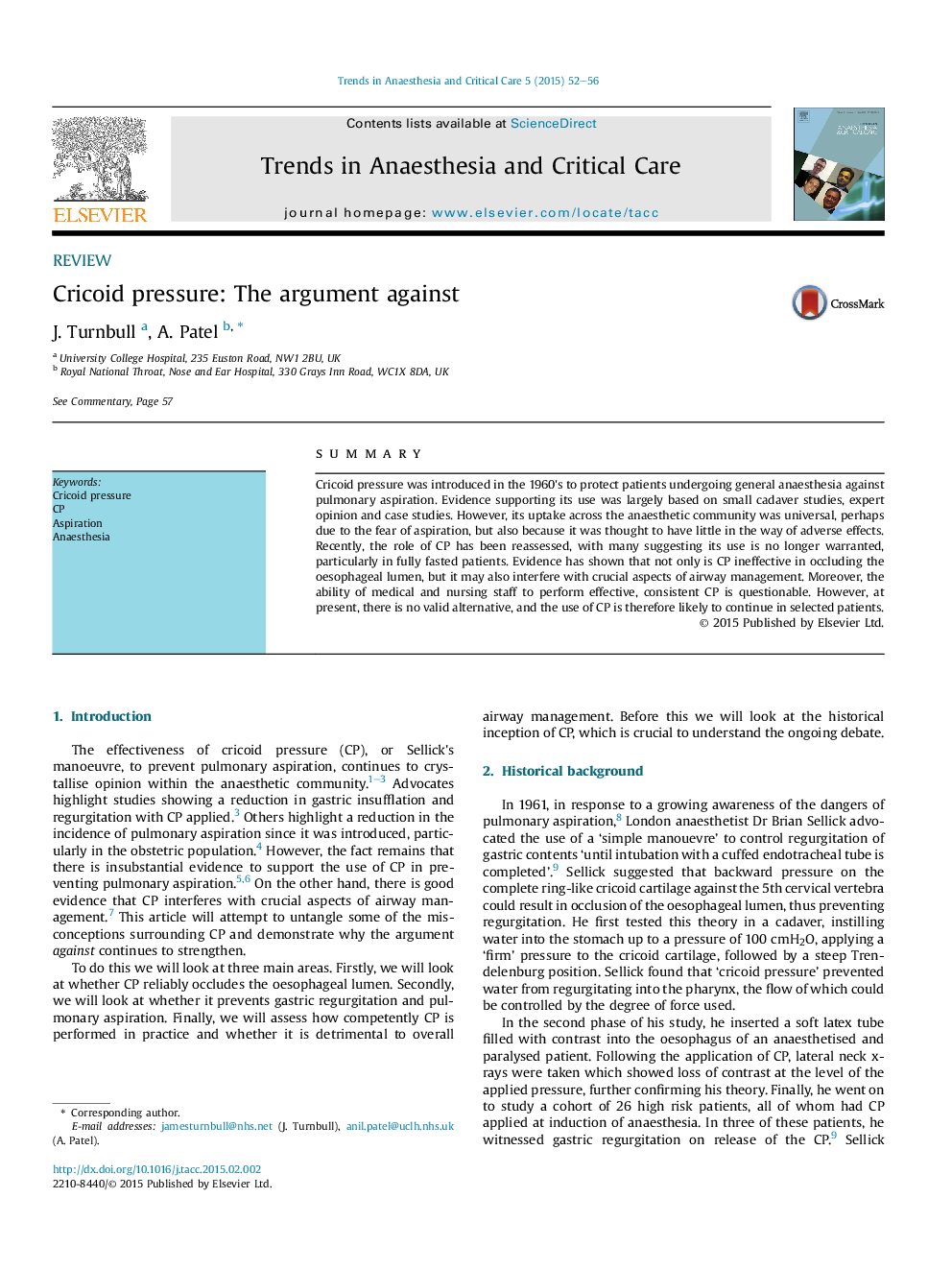| Article ID | Journal | Published Year | Pages | File Type |
|---|---|---|---|---|
| 2772599 | Trends in Anaesthesia and Critical Care | 2015 | 5 Pages |
SummaryCricoid pressure was introduced in the 1960's to protect patients undergoing general anaesthesia against pulmonary aspiration. Evidence supporting its use was largely based on small cadaver studies, expert opinion and case studies. However, its uptake across the anaesthetic community was universal, perhaps due to the fear of aspiration, but also because it was thought to have little in the way of adverse effects. Recently, the role of CP has been reassessed, with many suggesting its use is no longer warranted, particularly in fully fasted patients. Evidence has shown that not only is CP ineffective in occluding the oesophageal lumen, but it may also interfere with crucial aspects of airway management. Moreover, the ability of medical and nursing staff to perform effective, consistent CP is questionable. However, at present, there is no valid alternative, and the use of CP is therefore likely to continue in selected patients.
